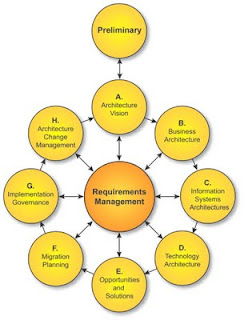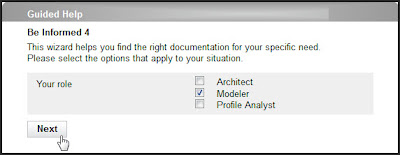Old Tech - New Tech (part 2)
In my previous article, I described how I used a Card Method to gather input from my audience for a Smart Documentation solution. My approach for these sessions was:
- I prepared approximately 20 cards with topics from the current version of the system
- I invited 18 respondents for a 30 minutes session
- The sessions consisted of three parts:
- To start with, I asked every respondent to make five cards for the five topics that they would like to find on the new system. By narrowing it down to five, I encourage them to only write down the most important topics. At the end of this step I asked them to make categories of these five cards, each category forming a column on the table.
- In the next step I - one by one - gave them the prepared topics and asked the respondent to add them to an existing category or create a new category for it. When all cards were done, we reviewed the categories and made final adjustments
- In the final step, the respondent wrote down the labels for the categories.
The Good
A major advantage of this method was that all respondents had the time to provide their input, fully undisturbed. As the method has put me in a moderator role, their input was pure and not influenced by my vision on the most effective structure.Why it didn't work
After gathering the results from 18 respondents, the moment came to compare the results and find one or more patterns. And here is where it went wrong, there was hardly any pattern in the results. Every participant came with his or her own vision on how things should be organized. There was no fixed navigation possible that would suit all of them!Solution 1: Use a moderation session to let the applicants sort it out together
Performing the card method with 18 participants alone didn't provide us with a clear navigation structure for our smart documentation solution. As there was no interaction between the respondents, every respondent came with its own preferred structure. To get one widely accepted standard, we need another method: a method in which the participants can discuss and prioritize their input. The moderation method offers that approach.
The moderation method is a widely accepted approach for interactive working and learning in groups using a creative, yet structured visual dialogue process. Instead of solely talking, all contributions are made visually using coloured cards, other visual tools and large mobile pinboards. All group members are involved in the same way and are active at any given time. As with the Card Method, the moderator is not actively involved in the discussion but merely supports it.
The main advantage of this approach for our user research would be that at the end of the moderation session we have one navigation structure for our solution, as a result from the discussion between the participants.
Solution 2: Provide smart, multi-path navigation
With the input from 18 participants - from various departments and in various roles - we can make models of the context of our audience and relate these to the information that we want to provide to them. This is a completely different approach in which we accept that every individual is different and try to provide something that is not bound to one common navigation structure. Such a solution would also fit perfectly in our definition of smart documentation.
Back to the sketch book or not?
Although our end goal is a smart documentation solution that provides multiple paths to the content, I also want to offer one main structure that is understandable and usable for at least 90% of our users. But going back to the sketch book is not an option for me. So my approach is to capture the input from my respondents in models, propose one main structure, then build a prototype and do some pretests with a new set of respondents. Using the (free to use) Be Informed Personal Edition, I can immediately start working on my solution as the models visualize my content structure, the structure and constraints of the product, the user groups and roles and the context. As the models are instantly executable, I have my prototype up and running in no time and can show it to my customer and to respondents on my laptop.
Join the experience: Be Free!
Do you also have a great idea and wish for a way to prove its value to your colleagues, customers or manager(s)? Join the Be Free program, offered to you by Be Informed.
As a member of the Be Free community you will get the full version of the Be Informed Personal Edition for free, including a personal license, regular updates and patches, a community portal with tutorials and videos and free webinars.
So what's the catch? There isn't one. The only limitation of the Personal Edition is that you can't deploy your solution on a web server. For building prototypes that is not a limitation. And if your customer or manager likes the solution you have build so much that they want to use it, well then we have another kind of discussion. We offer you the freedom to prove your idea.



Comments